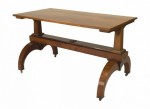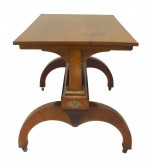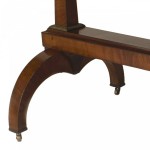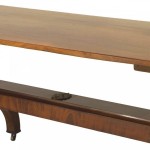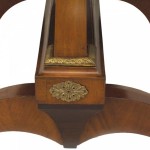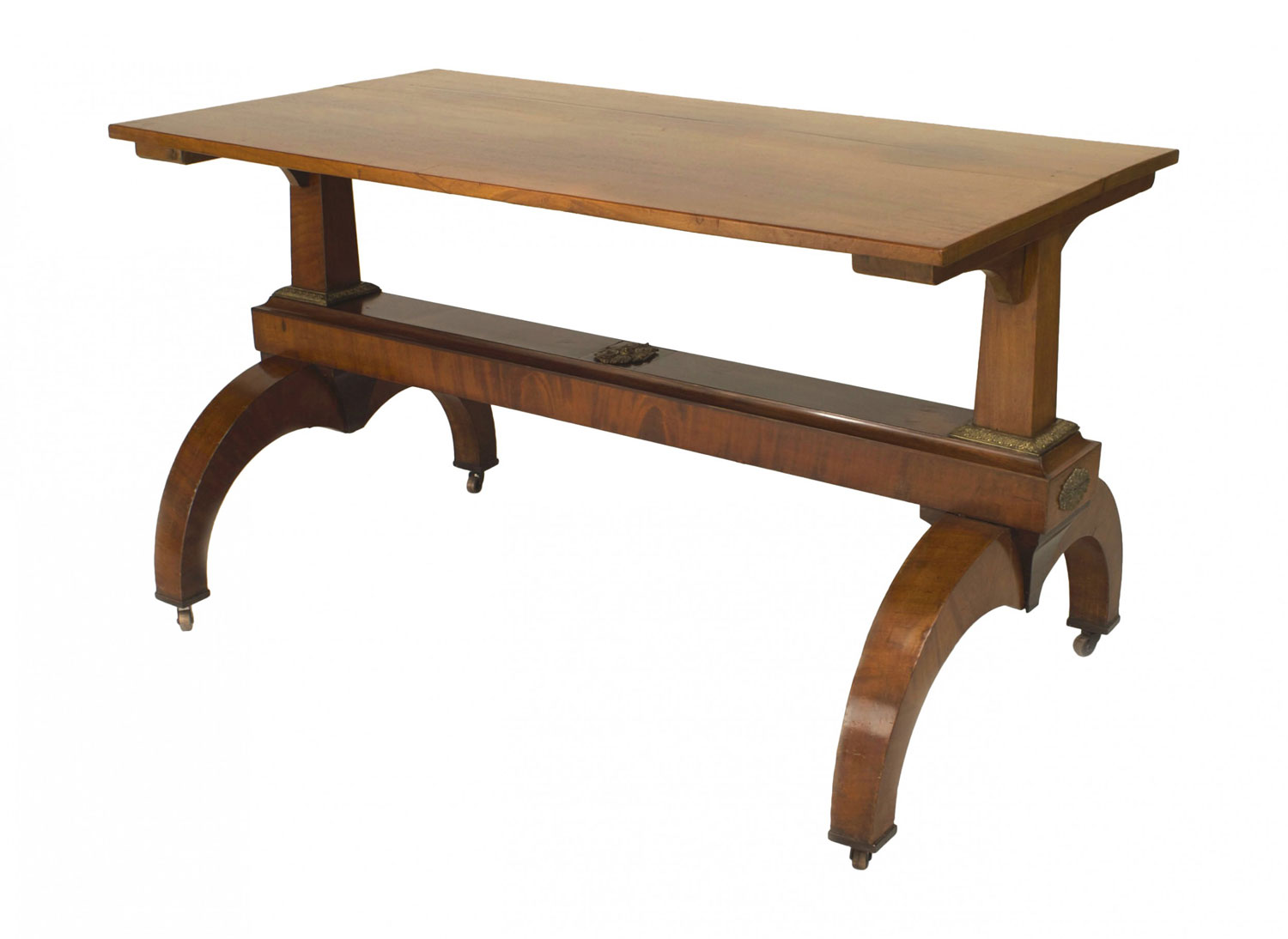Austrian Biedermeier Walnut Davenport Table
$14,500 (USD)
Available Qty: 1
Item #: ROS034
Austrian Biedermeier (19th Century) walnut davenport table with bronze trim on pedestal base sides connected with a stretcher..
Ships from:
Newel Warehouse
32-00 Skillman Ave
Long Island City NY - 11101
Taxes may apply.
Learn more
See it in Person
Call (212) 758-1970 or Email Us
Austrian Biedermeier Walnut Davenport Table
Need Assistance?
Call us at 212-758-1970 for assistance With made to order items
Special Order Terms & Conditions
50% due on approval. 50% upon completion Of production. Please refer to Newel's company policies
INQUIRE
PLEASE FILL IN THE REQUIRED FIELDS.
X
Austrian Biedermeier Walnut Davenport Table
Austrian Biedermeier (19th Century) walnut davenport table with bronze trim on pedestal base sides connected with a stretcher.
DETAILS
Sku:
ROS034
Ships From:
New York, NY
Creation Date:
19th Century
DIMENSIONS (INCHES)
Width:
48.8"
Height:
28.5"
Depth :
26.3"
INFO
Style:
Biedermeier
Materials & Techniques:
Bronze, walnut
Category:
Tables
Good; Wear consistent with age and use
related items
Romanian Biedermeier 3-Drawer Burlwood Chest / Commode
$12,000
(USD)
QTY: 1
#NWL6105
Width: 51.5"
Depth: 26"
Height: 38"
Save to project
Austrian Biedermeier Mahogany Demilune Console Table
$9,500
(USD)
QTY: 1
#GRL3967
Width: 24"
Depth: 11.75"
Height: 37"
Save to project
Austrian Biedermeier Walnut Davenport Table
$18,500
(USD)
QTY: 1
#059189
Width: 49.75"
Depth: 22.5"
Height: 30.25"
Save to project
Pair of Austrian Biedermeier Maple Commodes
$28,000
/ Pair (USD)
QTY: 2
#020143B
Width: 24.5"
Depth: 16"
Height: 91"
Save to project
Austrian Biedermeier Mahogany Demilune Console Table
$9,500
(USD)
QTY: 1
#GRL3967
Width: 24"
Depth: 11.75"
Height: 37"
Save to project
Austrian Biedermeier Walnut Davenport Table
$18,500
(USD)
QTY: 1
#059189
Width: 49.75"
Depth: 22.5"
Height: 30.25"
Save to project
Pair of Austrian Biedermeier Maple Commodes
$28,000
/ Pair (USD)
QTY: 2
#020143B
Width: 24.5"
Depth: 16"
Height: 91"
Save to project
Austrian Biedermeier Mahogany Demilune Console Table
$9,500
(USD)
QTY: 1
#GRL3967
Width: 24"
Depth: 11.75"
Height: 37"
Save to project
Austrian Biedermeier Walnut Davenport Table
$18,500
(USD)
QTY: 1
#059189
Width: 49.75"
Depth: 22.5"
Height: 30.25"
Save to project
Pair of Austrian Biedermeier Maple Commodes
$28,000
/ Pair (USD)
QTY: 2
#020143B
Width: 24.5"
Depth: 16"
Height: 91"
Save to project
Romanian Biedermeier 3-Drawer Burlwood Chest / Commode
$12,000
(USD)
QTY: 1
#NWL6105
Width: 51.5"
Depth: 26"
Height: 38"
Save to project
Austrian Biedermeier Mahogany Demilune Console Table
$9,500
(USD)
QTY: 1
#GRL3967
Width: 24"
Depth: 11.75"
Height: 37"
Save to project
Austrian Biedermeier Walnut Davenport Table
$18,500
(USD)
QTY: 1
#059189
Width: 49.75"
Depth: 22.5"
Height: 30.25"
Save to project
Pair of Austrian Biedermeier Maple Commodes
$28,000
/ Pair (USD)
QTY: 2
#020143B
Width: 24.5"
Depth: 16"
Height: 91"
Save to project
Austrian Biedermeier Walnut Davenport Table
$18,500
(USD)
QTY: 1
#059189
Width: 49.75"
Depth: 22.5"
Height: 30.25"
Save to project
Pair of Austrian Biedermeier Maple Commodes
$28,000
/ Pair (USD)
QTY: 2
#020143B
Width: 24.5"
Depth: 16"
Height: 91"
Save to project
Romanian Biedermeier 3-Drawer Burlwood Chest / Commode
$12,000
(USD)
QTY: 1
#NWL6105
Width: 51.5"
Depth: 26"
Height: 38"
Save to project
Austrian Biedermeier Mahogany Demilune Console Table
$9,500
(USD)
QTY: 1
#GRL3967
Width: 24"
Depth: 11.75"
Height: 37"
Save to project
Austrian Biedermeier Walnut Davenport Table
$18,500
(USD)
QTY: 1
#059189
Width: 49.75"
Depth: 22.5"
Height: 30.25"
Save to project
Pair of Austrian Biedermeier Maple Commodes
$28,000
/ Pair (USD)
QTY: 2
#020143B
Width: 24.5"
Depth: 16"
Height: 91"
Save to project
Romanian Biedermeier 3-Drawer Burlwood Chest / Commode
$12,000
(USD)
QTY: 1
#NWL6105
Width: 51.5"
Depth: 26"
Height: 38"
Save to project
Pair of Austrian Biedermeier Maple Commodes
$28,000
/ Pair (USD)
QTY: 2
#020143B
Width: 24.5"
Depth: 16"
Height: 91"
Save to project
Romanian Biedermeier 3-Drawer Burlwood Chest / Commode
$12,000
(USD)
QTY: 1
#NWL6105
Width: 51.5"
Depth: 26"
Height: 38"
Save to project
Austrian Biedermeier Mahogany Demilune Console Table
$9,500
(USD)
QTY: 1
#GRL3967
Width: 24"
Depth: 11.75"
Height: 37"
Save to project
Austrian Biedermeier Walnut Davenport Table
$18,500
(USD)
QTY: 1
#059189
Width: 49.75"
Depth: 22.5"
Height: 30.25"
Save to project
Pair of Austrian Biedermeier Maple Commodes
$28,000
/ Pair (USD)
QTY: 2
#020143B
Width: 24.5"
Depth: 16"
Height: 91"
Save to project
Romanian Biedermeier 3-Drawer Burlwood Chest / Commode
$12,000
(USD)
QTY: 1
#NWL6105
Width: 51.5"
Depth: 26"
Height: 38"
Save to project
Austrian Biedermeier Mahogany Demilune Console Table
$9,500
(USD)
QTY: 1
#GRL3967
Width: 24"
Depth: 11.75"
Height: 37"

